Filter by
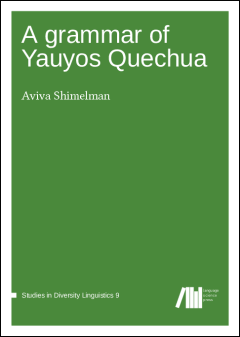
A grammar of Yauyos Quechua
This book presents a synchronic grammar of the southern dialects of Yauyos, an extremely endangered Quechuan language spoken in the Peruvian Andes. As the language is highly synthetic, the grammar focuses principally on morphology; a longer section is dedicated to the language's unusual evidential system. The grammar's 1400 examples are drawn from a 24-hour corpus of transcribed recordings coll…
- Edition
- -
- ISBN/ISSN
- 9783946234210
- Collation
- 356 hlm
- Series Title
- -
- Call Number
- 460 SHI g

A Grammar of the Eastern European Hasidic Hebrew Tale
A Grammar of the Eastern European Hasidic Hebrew Tale provides the first detailed linguistic analysis of the Hebrew narrative literature composed in late nineteenth- and early twentieth-century Eastern Europe by followers of the Hasidic spiritual movement. It presents a thorough description of Hasidic Hebrew orthography, morphology, syntax, and lexis illustrated with extensive examples. Attenti…
- Edition
- Volume: 77
- ISBN/ISSN
- 9789004281622
- Collation
- 450 hlm
- Series Title
- -
- Call Number
- -

A grammar of Rapa Nui
This book is a comprehensive description of the grammar of Rapa Nui, the Polynesian language spoken on Easter Island. After an introductory chapter, the grammar deals with phonology, word classes, the noun phrase, possession, the verb phrase, verbal and nonverbal clauses, mood and negation, and clause combinations. The phonology of Rapa Nui reveals certain issues of typological interest, such a…
- Edition
- -
- ISBN/ISSN
- 978-3-946234-75-3
- Collation
- 665 hlm
- Series Title
- -
- Call Number
- 499.4 KIE g

Afro-Peruvian Spanish: Spanish slavery and the legacy of Spanish Creoles
The present work not only contributes to shedding light on the linguistic and socio-historical origins of Afro-Peruvian Spanish, it also helps clarify the controversial puzzle concerning the genesis of Spanish creoles in the Americas in a broader sense. In order to provide a more concrete answer to the questions raised by McWhorter’s book on The Missing Spanish Creoles, the current study has …
- Edition
- -
- ISBN/ISSN
- 9789027252753
- Collation
- 200
- Series Title
- Creole Language Library
- Call Number
- -

Afro-Peruvian Spanish
The present work not only contributes to shedding light on the linguistic and socio-historical origins of Afro-Peruvian Spanish, it also helps clarify the controversial puzzle concerning the genesis of Spanish creoles in the Americas in a broader sense. In order to provide a more concrete answer to the questions raised by McWhorter’s book on The Missing Spanish Creoles, the current study has …
- Edition
- -
- ISBN/ISSN
- 9789027267764
- Collation
- -
- Series Title
- -
- Call Number
- 104394
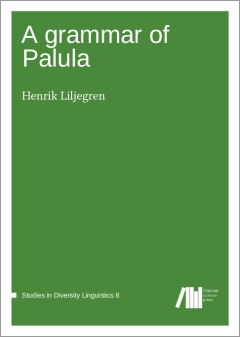
A grammar of Palula
This grammar provides a grammatical description of Palula, an Indo-Aryan language of the Shina group. The language is spoken by about 10,000 people in the Chitral district in Pakistan’s Khyber Pakhtunkhwa Province. This is the first extensive description of the formerly little-documented Palula language, and is one of only a few in-depth studies available for languages in the extremely multil…
- Edition
- -
- ISBN/ISSN
- 978-3-946234-31-9
- Collation
- 493 hlm
- Series Title
- -
- Call Number
- 495.491 LIL g
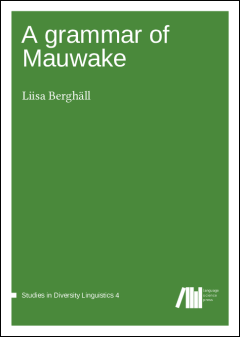
A grammar of Mauwake
This grammar provides a synchronic grammatical description of Mauwake, a Papuan Trans-New Guinea (TNG) language of about 2000 speakers on the north coast of the Madang Province in Papua New Guinea. It is the first book-length treatment of the Mauwake language and the only published grammar of the Kumil subgroup to date. Relying on other existing published and unpublished grammars, the author sh…
- Edition
- -
- ISBN/ISSN
- 978-3-946234-27-2
- Collation
- -
- Series Title
- -
- Call Number
- 499.12 BER g
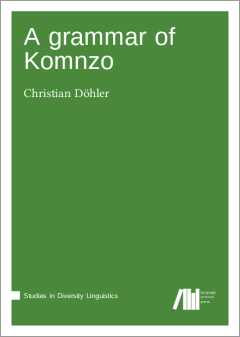
A grammar of Komnzo
Komnzo is a Papuan language of Southern New Guinea spoken by around 250 people in the village of Rouku. Komnzo belongs to the Tonda subgroup of the Yam language family, which is also known as the Morehead Upper-Maro group. This grammar provides the first comprehensive description of a Yam language. It is based on 16 months of fieldwork. The primary source of data is a text corpus of around 12 h…
- Edition
- -
- ISBN/ISSN
- 978-3-96110-125-2
- Collation
- -
- Series Title
- -
- Call Number
- 499.12 DOH g

A Fleet Street In Every Town :The Provincial Press in England, 1855-1900
"At the heart of Victorian culture was the local weekly newspaper. More popular than books, more widely read than the London papers, the local press was a national phenomenon. This book redraws the Victorian cultural map, shifting our focus away from one centre, London, and towards the many centres of the provinces. It offers a new paradigm in which place, and a sense of place, are vital to the…
- Edition
- -
- ISBN/ISSN
- 9781783745616
- Collation
- 469 hlm
- Series Title
- -
- Call Number
- -
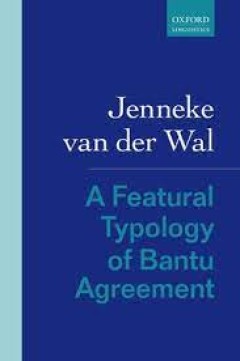
A Featural Typology of Bantu Agreement
The Bantu languages are in some sense remarkably uniform (SVO basic word order, noun classes, verbal morphology), but this extensive language family also show a wealth of morphosyntactic variation. Two core areas in which such variation is attested are subject and object agreement. The book explores the variation in Bantu subject and object marking on the basis of data from 75 Bantu languages, …
- Edition
- -
- ISBN/ISSN
- 9780198844280
- Collation
- 336 hlm
- Series Title
- -
- Call Number
- -
 Computer Science, Information & General Works
Computer Science, Information & General Works  Philosophy & Psychology
Philosophy & Psychology  Religion
Religion  Social Sciences
Social Sciences  Language
Language  Pure Science
Pure Science  Applied Sciences
Applied Sciences  Art & Recreation
Art & Recreation  Literature
Literature  History & Geography
History & Geography